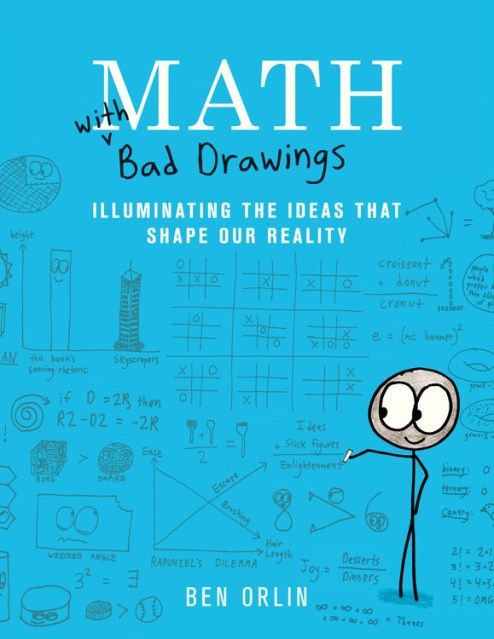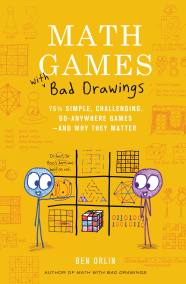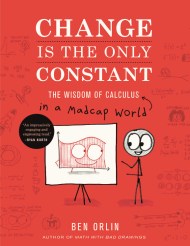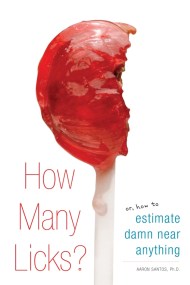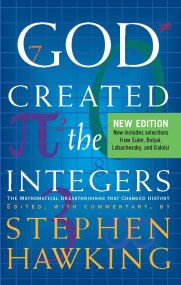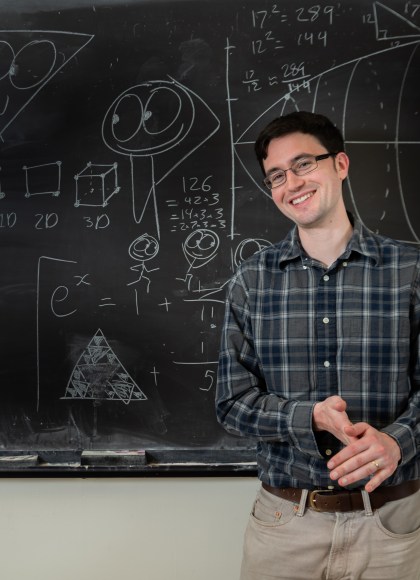Promotion
Use code MOM24 for 20% off site wide + free shipping over $45
Math with Bad Drawings
Illuminating the Ideas That Shape Our Reality
Contributors
By Ben Orlin
Formats and Prices
Price
$30.00Price
$39.00 CADFormat
Format:
- Hardcover $30.00 $39.00 CAD
- ebook $14.99 $19.99 CAD
- Trade Paperback $19.99 $24.99 CAD
This item is a preorder. Your payment method will be charged immediately, and the product is expected to ship on or around September 18, 2018. This date is subject to change due to shipping delays beyond our control.
Also available from:
In Math With Bad Drawings, Ben Orlin reveals to us what math actually is; its myriad uses, its strange symbols, and the wild leaps of logic and faith that define the usually impenetrable work of the mathematician.
Truth and knowledge come in multiple forms: colorful drawings, encouraging jokes, and the stories and insights of an empathetic teacher who believes that math should belong to everyone. Orlin shows us how to think like a mathematician by teaching us a brand-new game of tic-tac-toe, how to understand an economic crises by rolling a pair of dice, and the mathematical headache that ensues when attempting to build a spherical Death Star.
Every discussion in the book is illustrated with Orlin’s trademark “bad drawings,” which convey his message and insights with perfect pitch and clarity. With 24 chapters covering topics from the electoral college to human genetics to the reasons not to trust statistics, Math with Bad Drawings is a life-changing book for the math-estranged and math-enamored alike.
Genre:
-
"The book is a more polished, extensive discussion of the concepts that pepper Orlin's blog, featuring his trademark caustic wit, a refreshingly breezy conversational tone, and of course, lots and lots of bad drawings. It's a great, entertaining read for neophytes and math fans alike because Orlin excels at finding novel ways to connect the math to real-world problems-or in the case of the Death Star, to problems in fictional worlds."Ars Technica
-
"Ben Orlin is terribly bad at drawing. Luckily he's also fantastically clever and charming. His talents have added up to the most glorious, warm, and witty illustrated guide to the irresistible appeal of mathematics."Hannah Fry, mathematician, University College London and BBC presenter
-
"Brilliant, wide ranging, and irreverent, Math with Bad Drawings adds ha ha to aha. It'll make you smile - plus it might just make you smarter and wiser."Steven Strogatz, Professor of Mathematics, Cornell University, author of The Joy of x
-
"MATH WITH BAD DRAWINGS is a gloriously goofy word-number-and-cartoon fest that drags math out of the classroom and into the sunlight where it belongs. Great for your friend who thinks they hate math - actually, great for everyone!"Jordan Ellenberg, author of How Not To Be Wrong
-
"Ben Orlin has hit the seemingly unattainable sweet spot. He has written a book that is funny and serious, that is entertaining and informative, and that would interest a reader with or without a background in mathematics. Math with Bad Drawings would be a wonderful book for people who love math, used to love math, want to love math, want to know what math is good for, or just want to know what math really is."Math Horizons
-
"Orlin's ability to masterfully convey interesting and complex mathematical ideas through the whimsy of drawings (that, contrary to the suggestion of the title, are actually not that bad) is unparalleled. This is a great work showing the beauty of mathematics as it relates to our world. This is a must read for anyone who ever thought math isn't fun, or doesn't apply to the world we live in!"John Urschel, mathematician named to Forbes® "30 Under 30" list of outstanding young scientists and former NFL player
-
"Illuminating, inspiring, and hilarious, Math with Bad Drawings is everything you wanted to learn in class but never thought to ask. A joyful romp through mathematics and all its wisdom."Bianca Bosker, author of the New York Times-bestselling Cork Dork
- On Sale
- Sep 18, 2018
- Page Count
- 376 pages
- Publisher
- Black Dog & Leventhal
- ISBN-13
- 9780316509039
Newsletter Signup
By clicking ‘Sign Up,’ I acknowledge that I have read and agree to Hachette Book Group’s Privacy Policy and Terms of Use
